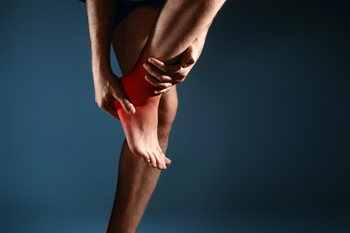How Lupus Can Affect the Feet
Tuesday, 13 September 2022 00:00
Lupus is an autoimmune disease that attacks tissues throughout the body, including the feet. It can attack muscles, blood vessels, tendons, and skin around the joints of the feet, and may cause joint deformity. This can be referred to as deforming arthropathy, and the most common form is known as Jaccoud’s type arthropathy. Bearing body weight on the feet with deformed joints can be a major source of pain. Lupus can cause the feet to swell, become numb, and ache due to arthritis. This can make it difficult for a person to move and sleep, which can cause other lupus symptoms to worsen. Feet can also turn blue from sensitivity to cold, which signals a vascular disorder known as Raynaud’s phenomenon. This is when the autoimmune system attacks small blood vessels, causing them to constrict when exposed to cold. Swelling and numbness can result, and pressure on the nerves of the feet can also cause pain. Sores and blisters that develop on the feet of those patients who have lupus can be slow to heal. This may be a result of the immune system suppressing drugs that keep the disease controlled. If the skin opens from these sores, it may be prone to infection. If you have lupus and are experiencing these symptoms in your feet, please see a podiatrist who can help with treatment options that might help restore pain, and free movement and functioning.
When dealing with systemic disease of the feet, it is extremely important to check the affected areas routinely so that any additional problems are caught quickly. If you have any concerns about your feet and ankles contact John McGhan, DPM from Gold Canyon Foot & Ankle. Our doctor will assist you with all of your podiatric needs.
Systemic Diseases of the Feet
Systemic diseases affect the whole body, and symptoms usually are displayed in the feet. This condition can make a patient’s ability to walk unbearable. Systemic diseases include gout, diabetes mellitus, neurological disorders, and arthritis.
Gout – is caused by an excess of uric acid in the body. Common symptoms include pain, inflammation, and redness at the metatarsal/phalangeal joint of the base big toe. Gout can be treated by NSAIDs to relieve pain and inflammation, and other drugs that lower the acid levels in the body.
Diabetes mellitus – is an increase in the level of blood sugar that the body cannot counteract with its own insulin. Failure to produce enough insulin is a factor in Diabetes.
Diabetes of the Feet
Diabetic Neuropathy – may lead to damaged nerves and affect the feet through numbness and loss of sensation.
Peripheral Vascular Disease – can restrict the blood flow to the feet, and often times lead to amputation of the feet.
If you have any questions please feel free to contact our office located in Gold Canyon, AZ . We offer the newest diagnostic and treatment technologies for all your foot and ankle needs.
